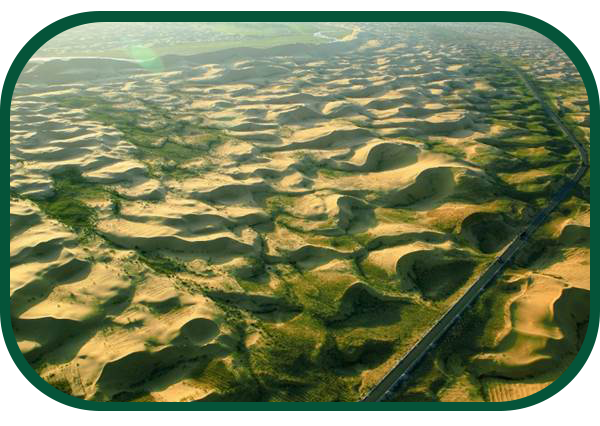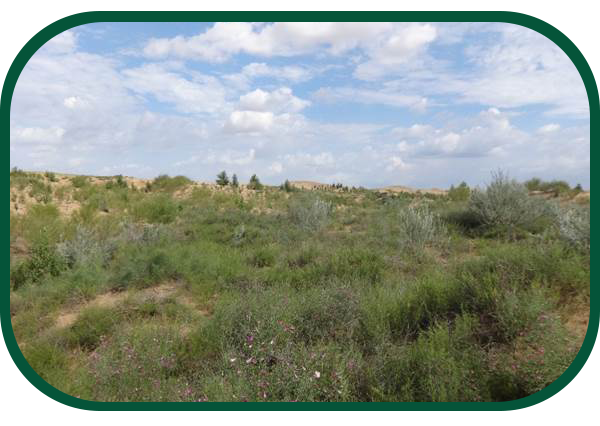Future Forest
change of The Green Walls
The desolate desert is slowly turning into a lush forest.

The desolate desert is slowly turning into a lush forest.


Carbon dioxide concentration in the atmosphere, which have been stable for tens of thousands of years, have been increasing rapidly since the Industrial Revolution (1).

This climate change is accelerating global warming, resulting in record high temperatures.(2)

Desertification, coupled with water scarcity, has destroyed 23% of the planet’s land and is still occurring at a rate of 32 football fields per minute. (3)
The project, which has been ongoing for the past 18 years (since 2002), plays a major role in blocking sandstorms and reducing the damage caused by yellow dust in Korea by planting and greening trees on the shifting sand dunes where yellow dust directly originates. Future Forest also restores dry areas to land that can be used by humans and living creatures, practicing sustainable development between humans and nature.Today, the restored land has become a place for locals who fled the sandstorms to return and live, a place of relaxation for hundreds of thousands of citizens of neighboring cities, and an ecosystem where many plants and animals have returned to rely on the trees planted.Kubuqi Green Ecological Park works closely with international organizations and environmental groups around the world, including the UNCCD, to participate in discussions on land degradation neutrality (LDN) and desertification, land degradation, and drought, which are efforts to halt desertification, and to promote bilateral friendship between Korea and China by strengthening environmental protection exchanges with Korean and Chinese institutions.

Recognizing that the prevention of yellow sand desertification can be effectively achieved through cooperation between China and Korea, Future Forest launched the ‘Korea-China Friendship Green Wall’ project to stop the eastward migration of the desert by building a windbreak forest 16 kilometers long and 0.6 kilometers wide across the Kubuqi Desert from north to south. The project to create a windbreak forest on both sides of the Jie Chai Road, which runs north and south through the Kubuqi Desert, took a total of five years and cost 7 billion won, with Mirae Forest and the Chinese side covering the cost in the form of matching funds. The project also aims to create a green global environmental community by building friendships and human networks among outstanding young people from both countries, who are the next generation of leaders, through joint planting activities.

Recognizing the potential of Future Forest’s decade-long anti-desertification campaign and human resource development, the United Nations Convention to Combat Desertification (UNCCD), together with Future Forest and the All-China Youth Federation, launched the “Plant a Billion Trees in the Desert” campaign on May 15, 2009, in the Kubuqi Desert of Inner Mongolia, China. At the launch of the campaign, a tree donated by UN Secretary General Ban Ki-moon was planted as the first tree. The movement is open to all citizens of the world who want to plant trees and turn devastated deserts into spaces of reinvention and life..